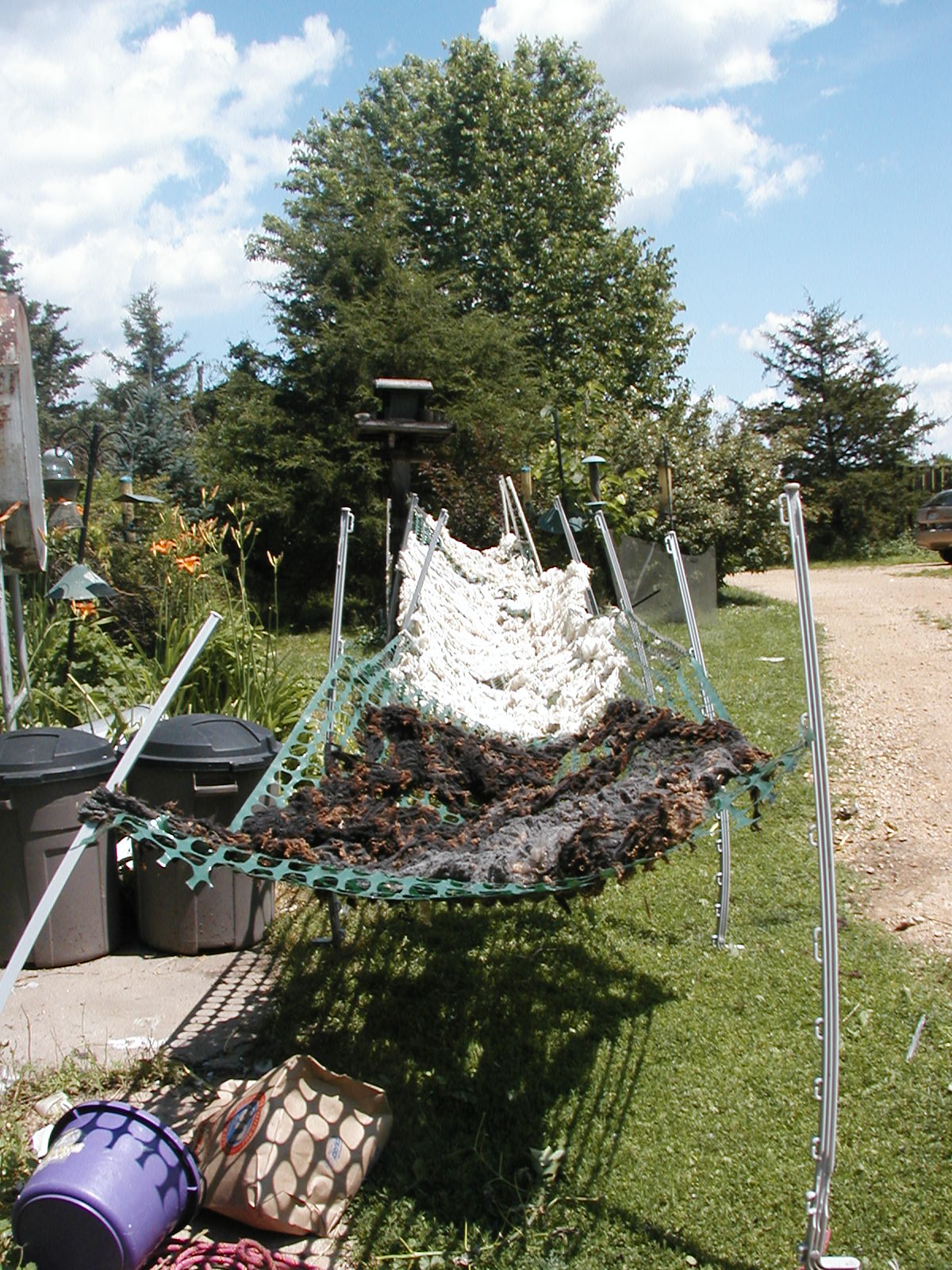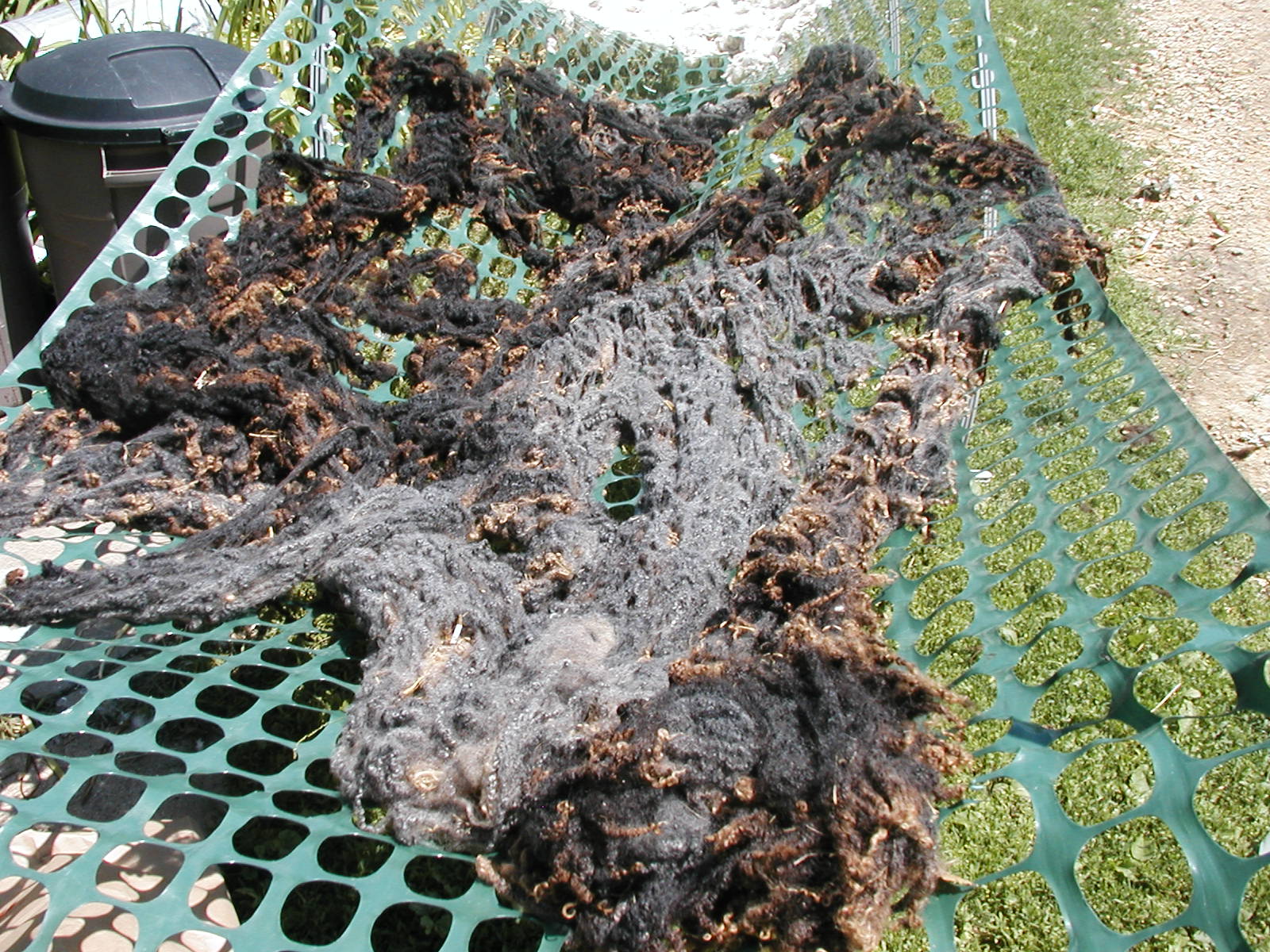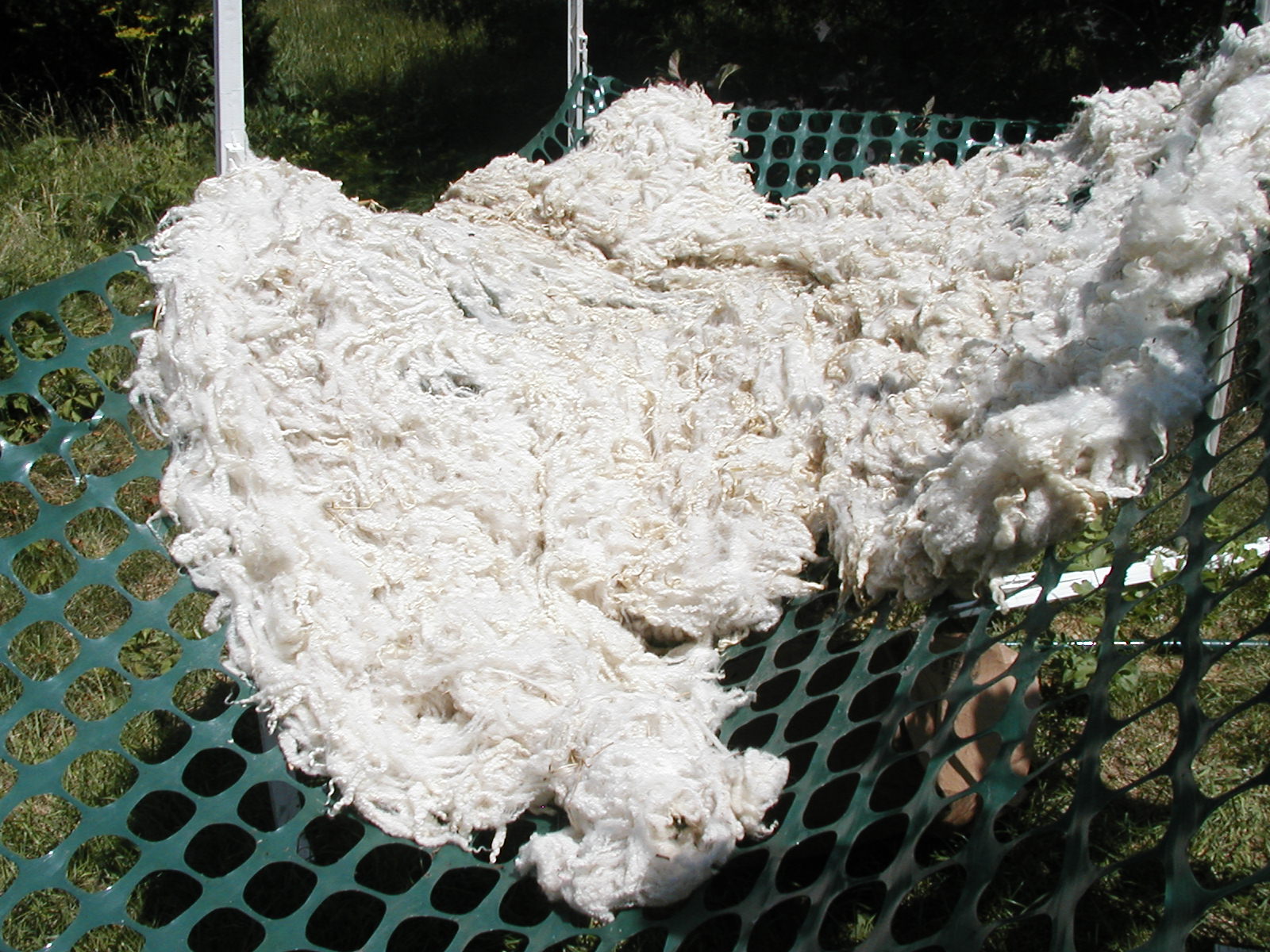 |
|
To purchase Bluefaced Leicester fleece or Bluefaced Leicester yarn follow these links:
Fleece
Yarn
Working With
Bluefaced Leicester Fleece

After a Bluefaced Leicester fleece has been skirted and washed the first time there should be minimal or no waste. There is still some oil to it and a bit of dirt. I dye, card, and spin it this way. If you dye, the process will remove more of the oil. I find that spinning with some oil in helps me keep the yarn even, but everyone spins differently. The oil, remaining yellow pigment, and bits of dirt come out readily when the yarn is washed. Use only pure detergent on wool. That cheap dishwashing detergent they sell by the gallon works great. "Soap" has a different pH and damages the fiber.
Bluefaced Leicester fleece shows colors beautifully because of the extra sheen it has. I usually dye the fleece in a multi shaded bath and blend the various colored fiber as I card. I like the depth of color it gives the yarn. I bought a big electric roaster, fill the pan with the acid or mordant treated bath, add the wool to fill the bath, bring to a simmer, turn off the heat, sprinkle the various colors over the wool, and let them dissolve together. I strategically poke the wool with a stick to gently move color from top to bottom. You don't need a lot of dye powder. You can always add more, so be stingy at first. I use acid dyes - with kids, vinegar is the safest mordant. If you use the left over bath to dye a pastel batch, it will pull most all of the dye from the water and you have very little chemical to worry about discarding. The pastel fiber can be really interesting blended with the darker fiber. If the wool stops taking up dye, throw in more acid. If you want to let the kids play, Kool Aid contains acid dyes that ma kes very nice pastels. kes very nice pastels.
Sheep that have been coated often have tighter locks. They are not felted, but need to be loosened before carding so they don't snarl the first pull through. If the fleece has felted, the fiber will not pull apart and it is ruined for spinning. Since Bluefaced Leicester fleece can be quite fine, it is possible to break the fiber by yanking on snarls. I hand pull the locks apart. There are mechanical pickers that accomplish the same thing. If you hand card, the hand card can be used to loosen the locks as you put them on the card. (I always get better results with any fleece with my hand card, but it is really tedious to do a whole fleece, so I mostly use my drum carder.)
Since Bluefaced Leicester fleece is fairly long, you can make a looser yarn for extra softness without losing strength. I double ply mine, spinning the strands a bit tighter and reverse twisting enough to get them loose when I ply them together. The corkscrew coil in the fleece is typical of BFL fleece and lends to the character of the yarn. It isn't quite as puffy as some yarns. It has a sort of soft slinky hand. If you want more puff, it combines well with Merino, Targhee, or other puffy wools and lends brightness similar to mohair. It combines wonderfully with kid mohair to give a supper fuzzy, slinky, shiny combination. 
To keep the yarn consistent as you spin, tie a sample you want to match to the wheel in front of you and keep comparing. My spinning varies from day to day and I need an example to target. It also helps to write down how your wheel is set up (my kids and dogs love to knock my band off) if you have optional wheel ratios, and, for that set up, count the average number of times you pump the peddle before you wind on. If you can remain consistent, your yarn will be much more consistent.
To finish yarn for knitting I tie the new yarn in a skein and wash it gently in scalding hot water with wool wash or Woolite, then drop it (no friction) into cold water to rinse. You can swish it gently around after it's cooled. This puffs it, pre-shrinks it some, and gives it a very slight felting to hold the fiber together. (The slight felting is really useful if spinning very short fiber into not very strong yarn.) Since weavers want a different type of yarn, you need to talk to a weaver about how they finish their spinning if you are going that way. In books, it typically says to weight the wet, washed skein so it dries pulled straight and tight. That practice is for weaving. It does not make good knitting yarn.
When knitting with Bluefaced Leicester handspun, remember to upsize your needles and not to knit it too tight. The character of the yarn shows up better if it has room to move and puff in the weave of the fabric. Always make a large swatch to test your needle size to your pattern because the diameter varies some. It's worth the time. I've had to pull too many projects out and always make a swatch now.
|
 |